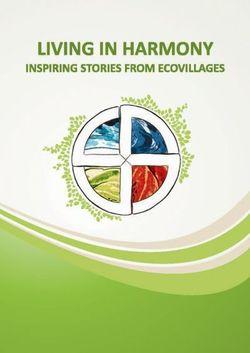
Nowadays, an increasing number of people are starting to think about creating lifestyles that do not endanger their harmony with the Earth and other people. The ecovillage movement provides lots of answers to the questions that arise in this regard. This book presents the most interesting and effective practices to be found in the ecovillage movement in Europe, particularly in the Baltic Sea region. If you read the book from start to finish, you will feel as if you are participating in a virtual tour of European ecovillages. You will get to know the stages of the ecovillage life cycle: the formation of a vision and initial establishment of the village; settlement and the first years of living in a new community; developmental changes in the community and their management; and the ecovillage becoming a centre that actively spreads knowledge about the ecovillage movement. If you are looking for particular solutions, please feel free to treat the chapters of the book as Lego bricks: read the paragraphs covering specific topics you are interested in and select the solutions that best fit your needs and values.
The manual“LIVING IN HARMONY: INSPIRING STORIES FROM ECOVILLAGES”is designed as a virtual tour of European ecovillages. Here you will find a collection of short ‘how we did it’ stories that describe different ecovillage models and the main elements of their design and governance. The stories represent the most interesting and effective best practice to be found in the ecovillage movement in Europe, particularly in the Baltic Sea region.
The manual consists of four chapters. Each chapter explores a different stage of the ecovillage life cycle, starting from the establishment stage, when the main characteristics of the ecovillage should be decided, and finishing with the stage when the community becomes stable, has its own traditions and well-functioning governance, and can become a center proliferating knowledge about the ecovillage movement, based on its own experiences.
This life cycle approach helps us to understand the specific problems faced by the ecovillage and gives new founders a sense of perspective, because ecovillages go through different lifecycle stages just as people do. As a baby’s life is different from a teenager’s life, the challenges that a new ecovillage faces are usually markedly different from the challenges being met by older ecovillages.
The ideal ecovillage does not exist. However, thousands of partial successful solutions do exist. Learn from the experience of existing ecovillages and design your own model that is the most suitable for you.
If you are looking for particular solutions, please feel free to treat the chapters of the book as Lego bricks: read the paragraphs covering specific topics you are interested in and select the solutions that best fit your needs and values.
Living in harmony: inspiring stories from ecovillages. 2013.Editor: Dalia Vidickienė. Vilnius: BMK leidykla, 2013. - 124 p. ISBN 978-609-8080-33-9
